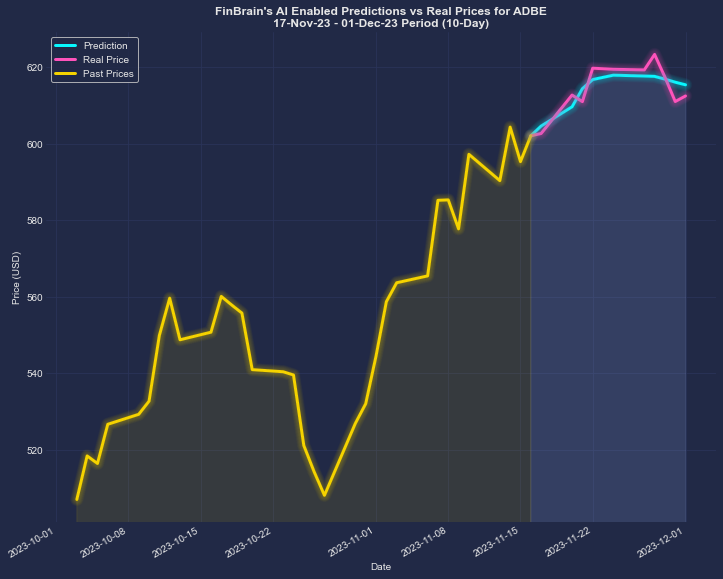20 Top Tips For Picking AI Stock Predicting Websites
20 Top Tips For Picking AI Stock Predicting Websites
Blog Article
Top 10 Things To Consider When Looking At Ai And Machine Learning Models On Ai Stock Trading Platforms
In order to get accurate, reliable and useful insights, you need to test the AI models and machine learning (ML). A model that is poor-designed or overhyped could result in incorrect forecasts as well as financial loss. We have compiled our top 10 tips on how to assess AI/ML platforms.
1. Understanding the model's goal and method of operation
Objective: Determine if the model was designed for trading in short-term terms or long-term investments, or sentiment analysis or risk management.
Algorithm transparency - Examine for any public disclosures regarding the algorithm (e.g. decision trees, neural nets, reinforcement learning etc.).
Customizability: Assess whether the model could be adjusted to your specific trading strategy or your risk tolerance.
2. Evaluate model performance through metrics
Accuracy Test the model's predictive accuracy. Don't solely rely on this measurement, however, because it can be inaccurate.
Accuracy and recall - Examine the model's capability to recognize genuine positives while minimizing false positives.
Risk-adjusted gain: See whether the assumptions of the model result in profitable transactions, after taking into account the risk.
3. Make sure you test the model by using Backtesting
Performance history: The model is tested with historical data to evaluate its performance under the previous market conditions.
Testing outside of sample: Make sure the model is tested with data it was not used to train on in order to avoid overfitting.
Analyzing scenarios: Examine the model's performance in different market conditions.
4. Be sure to check for any overfitting
Overfitting: Watch for models that are able to perform well using training data but do not perform well with data that has not been observed.
Methods for regularization: Make sure that the platform doesn't overfit when using regularization methods such as L1/L2 or dropout.
Cross-validation. Ensure the platform performs cross-validation to assess the model's generalizability.
5. Assess Feature Engineering
Relevant features: Check whether the model is using meaningful features (e.g. price, volume, technical indicators, sentiment data macroeconomic variables).
Choose features: Ensure that the platform only selects important statistically relevant features and does not contain redundant or insignificant information.
Dynamic updates of features: Check to see how the model adapts itself to new features, or market changes.
6. Evaluate Model Explainability
Interpretability (clarity) It is important to check whether the model can explain its predictions in a clear manner (e.g. the value of SHAP or importance of features).
Black-box Models: Be wary when platforms employ complex models without explanation tools (e.g. Deep Neural Networks).
User-friendly insights: Check if the platform gives actionable insight in a form that traders can understand and utilize.
7. Check the flexibility of your model
Market shifts: Find out if the model is able to adapt to new market conditions, for example economic shifts and black swans.
Continuous learning: Ensure that the platform updates the model by adding new information to enhance performance.
Feedback loops. Be sure to incorporate the feedback of users or actual results into the model to improve.
8. Examine for Bias or Fairness.
Data bias: Ensure that the data regarding training are accurate to the market and that they are not biased (e.g. overrepresentation in certain times or in certain sectors).
Model bias: Find out whether the platform is actively monitoring and mitigates biases in the predictions of the model.
Fairness: Make sure that the model doesn't disadvantage or favor certain sectors, stocks, or trading styles.
9. The Computational Efficiency of the Program
Speed: Determine whether a model is able to make predictions in real-time and with a minimum latency.
Scalability - Make sure that the platform can handle large datasets, multiple users and not degrade performance.
Resource usage: Check if the model is optimized to use computational resources efficiently (e.g. use of GPU/TPU).
Review Transparency and Accountability
Documentation of the model: Ensure that the platform has comprehensive documentation about the model's structure and the training process.
Third-party validation: Find out whether the model was independently validated or audited by an outside party.
Check that the platform is outfitted with mechanisms that can detect models that are not functioning correctly or fail to function.
Bonus Tips
User reviews Conduct user research and conduct case studies to assess the model's performance in actual life.
Trial period: You can use a free trial or demo to evaluate the model's predictions as well as its usability.
Support for customers: Make sure whether the platform offers solid customer support that can help solve any product-related or technical problems.
With these suggestions, you can evaluate the AI/ML models of platforms for stock prediction and make sure that they are reliable as well as transparent and linked with your goals in trading. Have a look at the best learn more about ai trade for website examples including ai day trading, artificial intelligence stocks, free ai tool for stock market india, best ai trading platform, ai investment stock, trader ai intal, stock market ai, ai stock picker, best ai stocks, ai stock price prediction and more.
Top 10 Tips On Assessing The Reviews And Reputations Of Ai Stock Predicting/Analyzing Trading Platforms
Examining reviews and reputation of AI-driven stock prediction systems and trading platforms is vital for ensuring trustworthiness, reliability, and effectiveness. Here are 10 guidelines on how to evaluate their reviews and reputation:
1. Check Independent Review Platforms
There are reviews available on reputable platforms such as G2, copyright or Capterra.
Why: Independent platforms are unbiased and provide feedback from real users.
2. Study Case Studies and User Testimonials
You can find user testimonials or case studies on the site of the platform and third-party websites.
The reason: These insights offer real-time feedback on the performance of your product and how satisfied users are.
3. Evaluation of Expert Opinions Industry Recognition
Tip: Research if the platform has been reviewed or recommended by industry experts, financial analysts, or reputable magazines.
Expert endorsements give credibility to the claims made by the platform.
4. Social Media Sentiment
Tip Monitor social media sites (e.g. Twitter. LinkedIn. Reddit.) to learn what others are saying and how they feel about it.
Why: Social media offers unfiltered opinions and trends on the platform.
5. Verify that the Regulatory Compliance is in place
Tips: Make sure the platform is in compliance with financial laws (e.g., SEC, FINRA) and privacy laws (e.g. GDPR, e.g.).
What's the reason? Compliance ensures that the platform operates legally and ethically.
6. Transparency is key in performance metrics
TIP: Find out if the platform has transparent performance metrics such as accuracy rates, ROI, and backtesting results.
Transparency helps build trust and allows users to assess the effectiveness of a system.
7. Check out the Quality of Customer Support
Tips: Read user reviews on the support system's efficiency and efficiency.
Why: For a positive experience, users need to have dependable assistance.
8. Red Flags: Check reviews for red flags
TIP: Watch out for repeated complaints, including low performance, hidden charges or a lack of updates.
Reason: Consistently low feedback could indicate a platform issue.
9. Assess User Engagement and Community Engagement
Tips - See whether there is an active community of users on the platform (e.g. Discord groups, forums) and whether they communicate with their users frequently.
Why is that a active community is a sign of the satisfaction of customers and continuous support.
10. Check out the history of the company.
Find out more about the company by researching its history, management team, and financial technology performance.
Why: A track record of trust and experience can increase the trust in the platform.
Bonus Tip: Compare Multiple Platforms
Compare reviews and reputations to identify platforms that best meet your needs.
These tips will help you assess the reputation of AI trading and stocks prediction platforms. You will be able choose a solution that is reliable and efficient. Read the most popular ai for copyright trading tips for more tips including ai stocks, investing in ai stocks, invest in ai stocks, best stock analysis app, ai investment stock, ai stock trader, best copyright prediction site, chart ai for trading, stocks ai, trading ai and more.